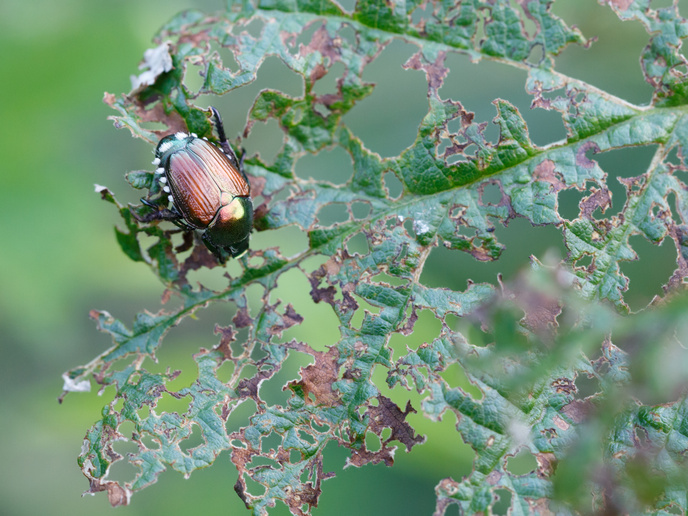Protecting EU plants from the Japanese beetle threat
The Japanese beetle(opens in new window) (Popillia japonica) can cause extensive damage, with costs to European agriculture ranging from EUR 30 million to EUR 7.8 billion per year. There are wide-ranging risks across countries and crops, but large grape-producing countries such as France and Italy are particularly vulnerable. Potential damage in these countries could come to EUR 92 million and EUR 68 million per year, respectively, according to a recently published paper(opens in new window). When it reaches habitats favourable to its proliferation, P. japonica can build up horrifying population densities. Hundreds of individuals aggregate on a single host plant, stripping leaves of vines, cherries or plums. Controlling it has been problematic as P. japonica is also very abundant in places where conventional plant protection measures are not feasible from a technical point of view, or socially unacceptable, such as conservation and residential areas. “We have to focus on fast detection of new outbreaks, and on a sustainable reduction of its populations in the infested zone. Both these aims were explored by the IPM-Popillia(opens in new window) project,” says Giselher Grabenweger(opens in new window), the project’s coordinator. The project, which was hosted by Agroscope(opens in new window) in Switzerland, also involved local residents in a bid to track beetle populations.
Diverse expertise to tackle the spread of P. japonica
Entomologists, phytosanitary inspectors, vulnerable businesses, developers of AI-supported detection tools, mobile apps and software, along with mathematicians to programme the spread, and economists who can put a price tag on the invasion and control, all got involved. Together they created the IPM-Toolbox, a bundle of control measures that are not super-efficient when applied alone but are effective when combined. “In IPM-Popillia, we showed that entomopathogenic nematodes should be applied to control larvae of P. japonica in the soils of meadows. “We established that vulnerable crops, like vines, may be protected from damage with the application of repellents like kaolin clay sprays, and that adult P. japonica can be controlled with entomopathogenic fungi or with insecticide-treated net traps,” Grabenweger explains. Adding that it is also beneficial to limit watering of lawns, as this makes the soil favourable to the beetle when laying eggs. Combining all these different ‘tools’ at the right time leads to an efficient control strategy against P. japonica.
Practical findings to apply to pest control
The project’s French partners modelled the habitat suitability of European regions for P. japonica establishment and then assessed connectivity between regions, by air traffic, road traffic and trains. This enabled them to define the places in Europe where the risk of new Popillia outbreaks is highest. Their modelling was shown to be robust when Zurich, one of the areas they identified as being at high risk, then went on to experience an outbreak. An app is available from the App Store or for Android, to enable citizen scientists to monitor sightings. To encourage the next generation of scientists, the Italian partners worked with schoolchildren to find out what solutions they could come up with(opens in new window). “With creativity and by intuition, they proposed two solutions which are surprisingly close to project developments which were already under test evaluation: the ‘attract-and-kill’ strategy using pheromones and entomopathogenic fungi as eco-friendly biocontrol agents,” adds Grabenweger.
Keywords
IPM-Popillia, Japanese beetle, crops, vines, pest control, biocontrol agent, entomologists, phytosanitary inspectors, citizen scientists







